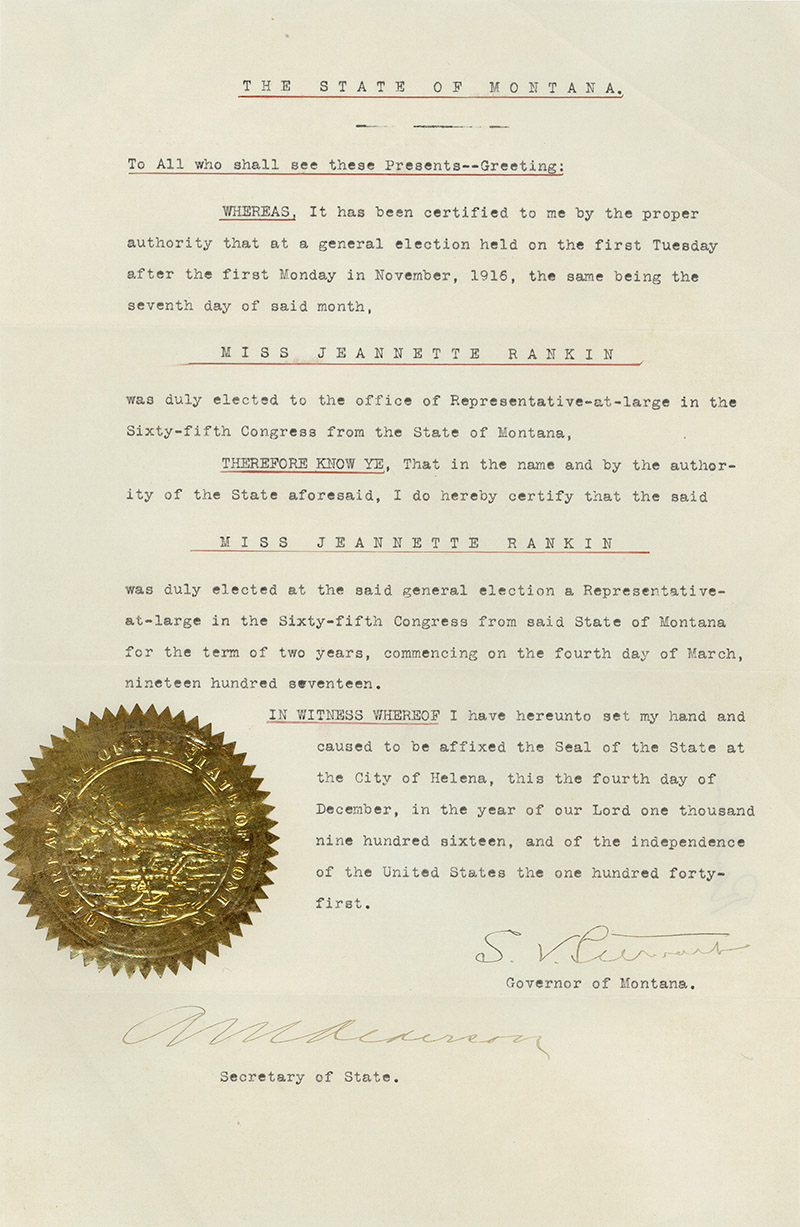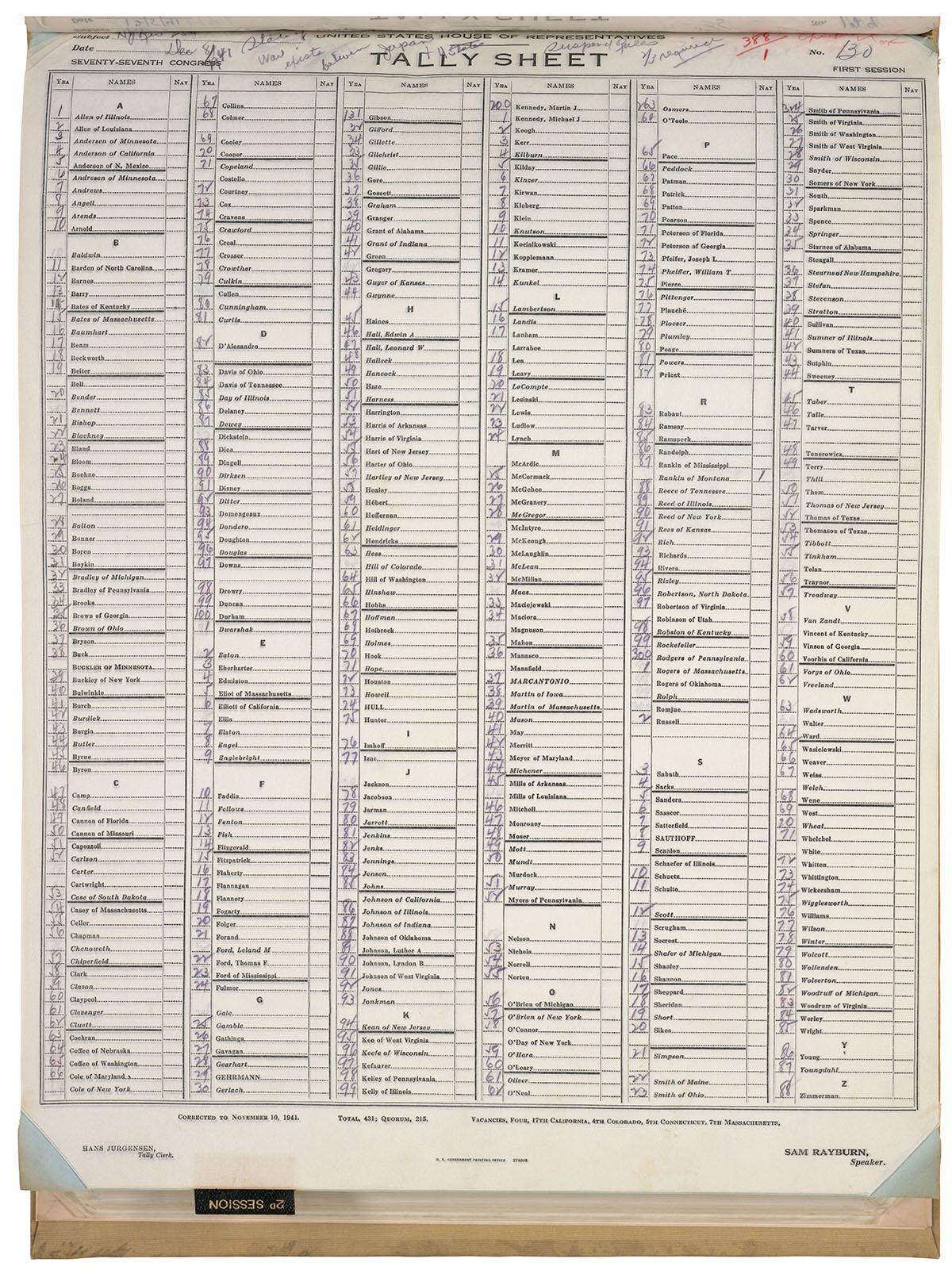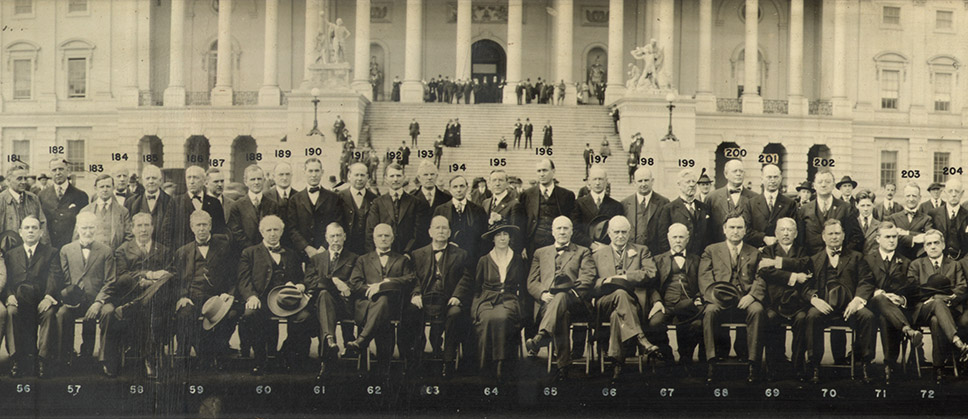
Political pioneer, suffragist, pacifist
Four years before ratification of the 19th Amendment secured American women’s constitutional right to vote, Jeannette Rankin became the first woman elected to Congress. Rankin was sworn in as a representative for Montana on April 2, 1917. She served a second term in the House of Representatives in 1941.
Both of Representative Rankin’s congressional terms coincided with the country’s entry into a World War. A lifelong pacifist, Rankin has the distinction of being the only member of Congress to vote against U.S. involvement in both World War I and World War II. During her time in Congress, Rankin also made significant efforts to secure woman suffrage and pass social reforms that improved working conditions and protected women and children.
Upon learning of her election in 1916, Rankin foretold, “I may be the first woman member of Congress, but I won’t be the last.” As of 2021, 387 women have served in the U.S. Congress.

Jeannette Rankin’s election certificate
National Archives, Records of the U.S. House of Representatives

Despite immense pressure to vote against her conscience, Jeannette Rankin remained steadfast in her opposition to U.S. participation in both World Wars—a conviction that earned overwhelming criticism and cost her reelection in both terms. Rankin was one of 50 House members to vote against entering World War I, but her decision to cast the only “nay” vote in Congress against declaring war on Japan after the attack on Pearl Harbor was especially controversial.
Tally sheet for House of Representatives vote to declare war against Japan, December 8, 1941
National Archives, Records of the U.S. House of Representatives
To learn more about Jeanette Rankin’s life and time in Congress, visit the National Archives Pieces of History blog "Jeannette Rankin: The woman who voted to give women the right to vote."
Header image: Group portrait of the sixty-fifth U.S. Congress in front of the U.S. Capitol, Washington, D.C., 1917-1919. (detail) Library of Congress, Prints and Photographs Division, LC-DIG-ppmsca-13272.
